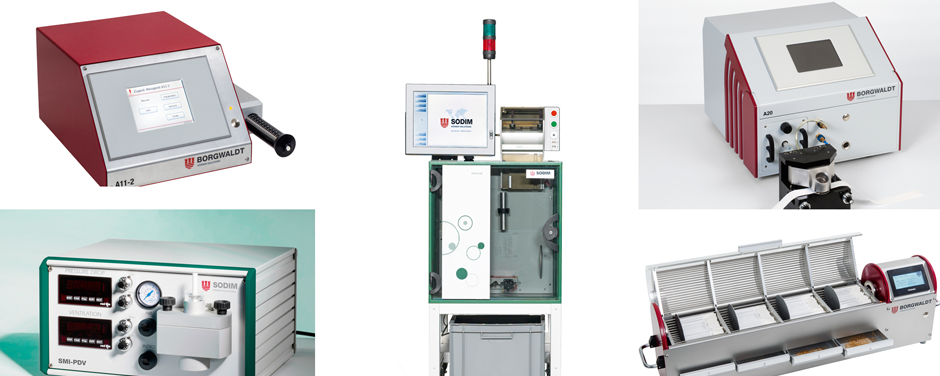Mangels klarer Regularien bewegen sich Hersteller innovativer Heated Tobacco Products (HTP) in vielerlei Hinsicht in einem unsicheren Bereich. Entsprechend hoch ist der Bedarf des sich schnell entwickelnden Marktes nach zukunftssicheren und zuverlässigen Analyse- und Kontrollinstrumenten.

News & Stories - 09/29/2020
THP: guidance in an unregulated market
Compact
Challenge
There are many different devices and product designs. There are no binding standards or clear legal requirements for either – but manufacturers want to fulfil quality parameters and ensure their products are safe in this transitional period and beyond.
Solution
Sodim and Borgwaldt have representatives on all the committees that are involved in the regulatory process. They already offer flexible instruments for analysing and monitoring a wide – and constantly expanding – range of parameters.
- Physical quality parameters: Pressure drop or size can be monitored just as for filter cigarettes, for example.
- Smoke analysis: Generation, monitoring and collection of emissions.
- Non-combustion tests: Various methods are available to certify, that the tobacco is heated and not burned by the product.
Few people are more closely involved in the development of future regulations for HTP than Thomas Schmidt. As Director of Scientific & Technical Affairs at the Borgwaldt Group, he sits on all the key national and international committees that are dealing with this issue, from DIN and CEN to ISO and CORESTA. “Binding standards for quantifying emissions are on the way. Organizations, such as ISO or CORESTA, are working flat out to develop them,” says Schmidt. The focus here is on tests and requirements for the heaters as well as aspects that are also relevant to cigarettes: the analysis of emissions and compliance with basic regulatory standards.

lAs a player in this evolving standardization process, we have our finger on the pulse of these new developments.”r
Thomas Schmidt, Director of Scientific & Technical Affairs at the Borgwaldt Group
Physical analysis
In some ways, tests for HTP are very similar to those for conventional filter cigarettes – parameters such as pressure drop, ventilation, weight, size, length and the stability of the ends apply to both. “As the Hauni Group’s metrology specialists, Sodim and Borgwaldt have decades of experience and expertise in this field. We can offer customers a host of solutions tailored to their specific needs,” explains Joost Elvers, Group Leader Key Account Management at Borgwaldt. “We use new kits and modules to adapt test stations and individual instruments to the constantly changing demands of the market. Right now, we’re focusing primarily on parameters such as the size of the multi-segment filter and its components, their individual hardnesses and the air permeability of the paper used.”
Aerosol tests
To facilitate the process of standardization, expert committees distinguish between three different HTP technologies when generating and collecting the HTP aerosols: electrically heated (eHTP), aerosol heated (aHTP) and carbon heated (cHTP) tobacco products. In the last of these, the heat source is a glowing carbon tip. “We have been building measuring instruments and developing our expertise since 1867. Our state-of-the-art systems are suitable for monitoring and collecting aerosols from all these HTP technologies,” explains Schmidt. “We offer solutions for different purposes and in a range of sizes – from one to 24 smoke or vaping channels.” Smoke traps are one technology that is currently under continuous development and refinement in this area. These devices collect substances for more detailed analysis. “We are continuously adapting to the changing needs of our customers with ever more sophisticated trap systems. Toxicology is another major focus of manufacturers and laboratories at the moment – our solutions for generating and collecting aerosols are an important step in this direction,” says Schmidt. “The instruments we manufacture can be used with almost any HTP device – not least to put the devices themselves through their paces with function, load and misuse tests.”
Heat not burn
Three different test methods are available to ensure that an HTP device does not burn any tobacco: smoking under oxygen-free conditions, quantification of carbon monoxide and quantification of nitrogen oxides. “Our equipment can support all these approaches,” explains Schmidt. “But that doesn’t mean that we’ve run out of ideas for new developments. We have lots of innovative features for our instruments in the pipeline.”
Share this article

